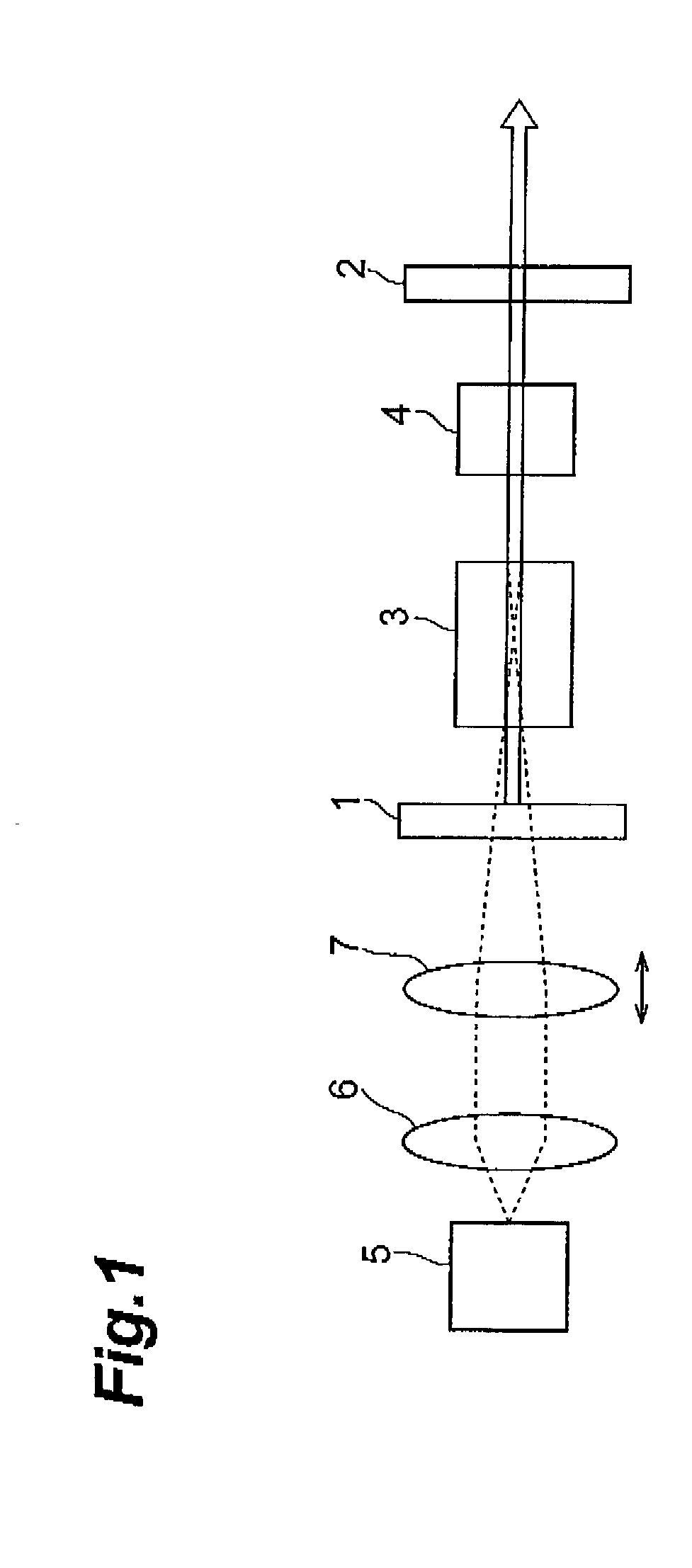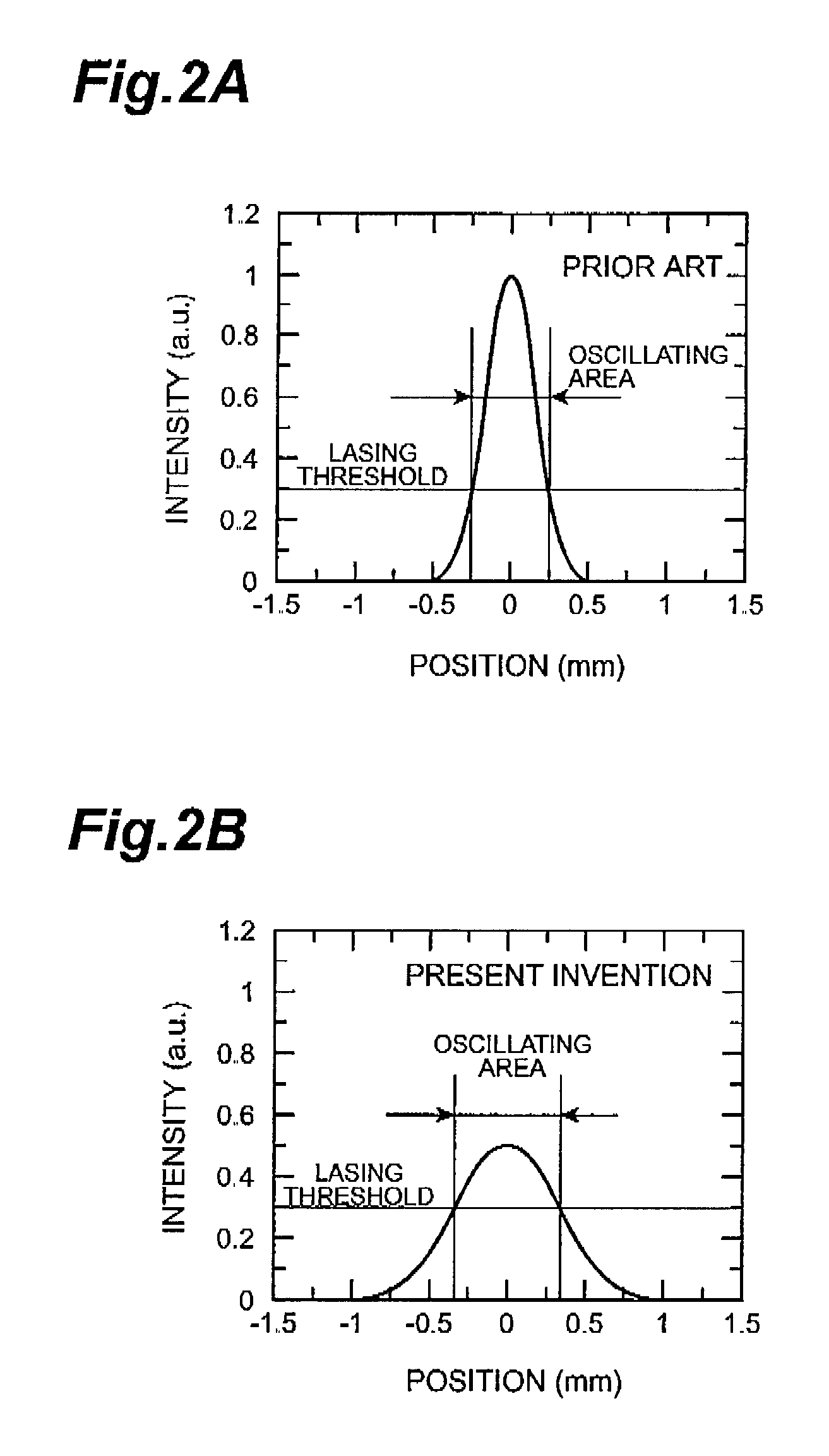Passively Q-switched laser
a laser and q-switching technology, applied in the direction of laser details, light demodulation, instruments, etc., can solve the problems of reducing the pulse interval of the outputted laser beam, and failing to increase the peak intensity (pulse energy) of the laser
- Summary
- Abstract
- Description
- Claims
- Application Information
AI Technical Summary
Benefits of technology
Problems solved by technology
Method used
Image
Examples
Embodiment Construction
[0042] The above-mentioned passively Q-switched laser was manufactured by way of trial and the characteristics thereof were evaluated.
Experimental Conditions
[0043] The elements used in the experiment were as follows: the maximum value of the drive current pulse supplied to the semiconductor laser 5 was 40 A (temporal peak intensity of the excitation laser beam: 25 W), the cycle frequency of the drive current pulse was 100 Hz (pulse width: 500 .mu.s), and the duty ratio was 5%.
1 TABLE I Semiconductor laser 5: Active Layer Material: AlGaAs Emitted Light Wavelength: 808 nm Solid-State Laser Medium 3: Host Material: Y.sub.3Al.sub.5O.sub.12 Dopant: Nd.sup.34 Dopant Concentration: 1.4 at % Fluorescence Wavelength: 1064 nm Host Crystal 4: Host Material: Y.sub.3A.sub.5O.sub.12 Dopant: Cr.sup.41 Absorption Waveband: 1064 nm .+-. 250 nm Initial Transmittance: 30% Reflective Mirror 1: Reflectivity: 99.9% (wavelength: 1064 nm) Transmittance: 99.9% (wavelength: 808 nm) Reflective Mirror 2: Refle...
PUM
 Login to View More
Login to View More Abstract
Description
Claims
Application Information
 Login to View More
Login to View More - R&D
- Intellectual Property
- Life Sciences
- Materials
- Tech Scout
- Unparalleled Data Quality
- Higher Quality Content
- 60% Fewer Hallucinations
Browse by: Latest US Patents, China's latest patents, Technical Efficacy Thesaurus, Application Domain, Technology Topic, Popular Technical Reports.
© 2025 PatSnap. All rights reserved.Legal|Privacy policy|Modern Slavery Act Transparency Statement|Sitemap|About US| Contact US: help@patsnap.com



